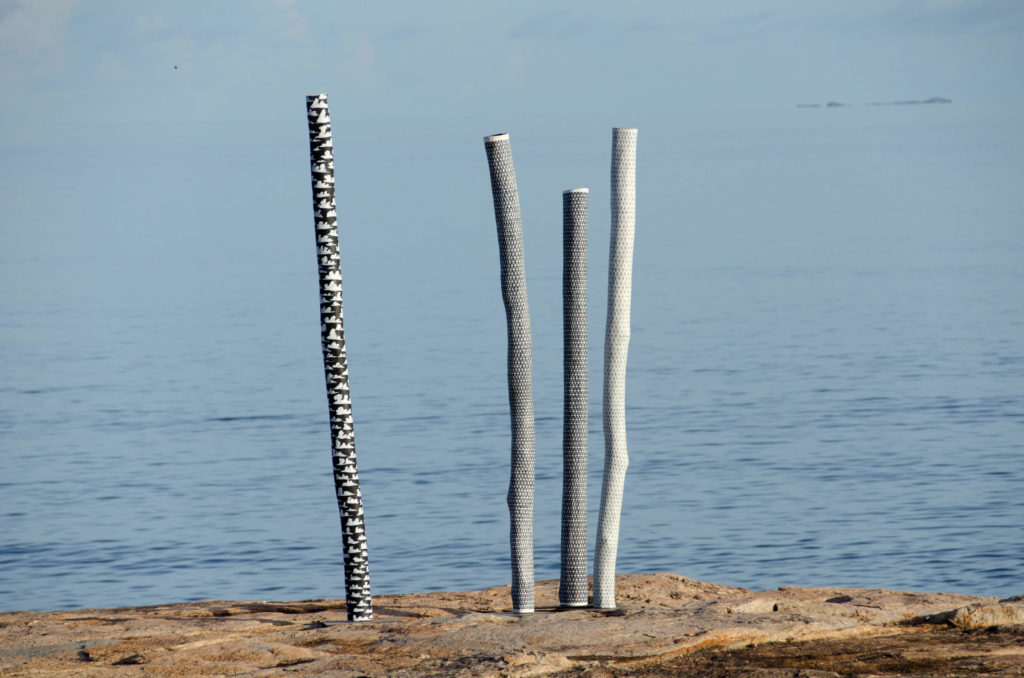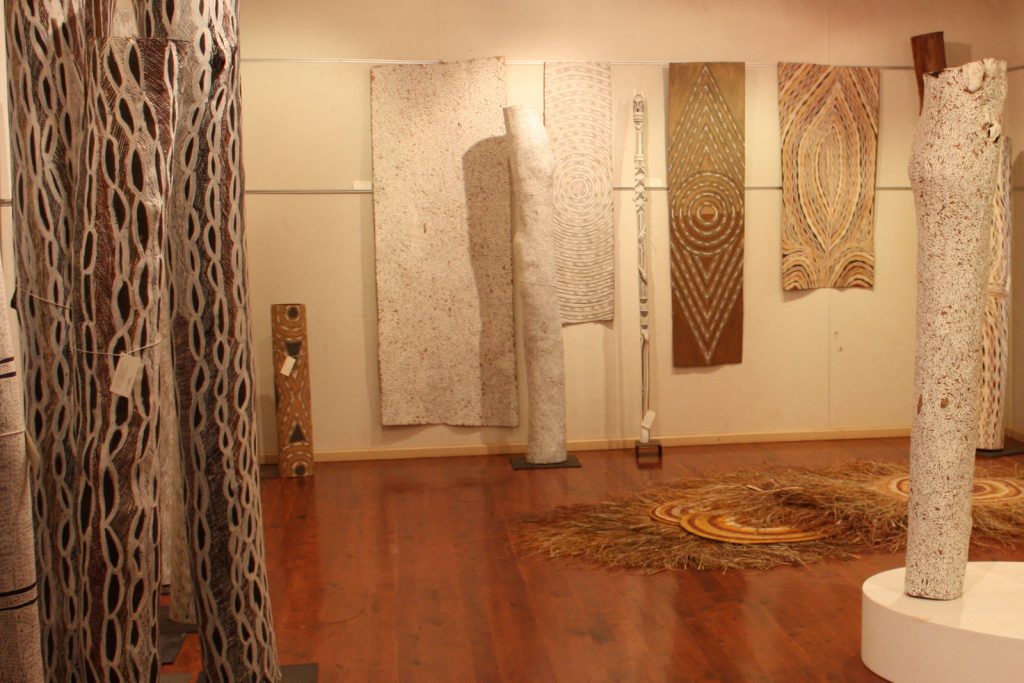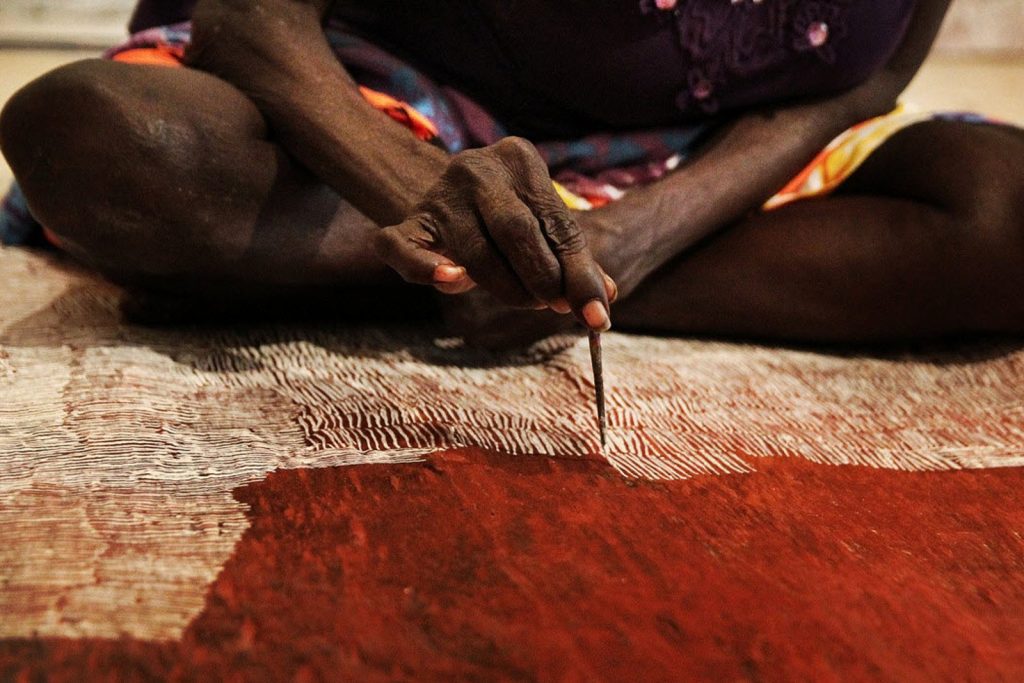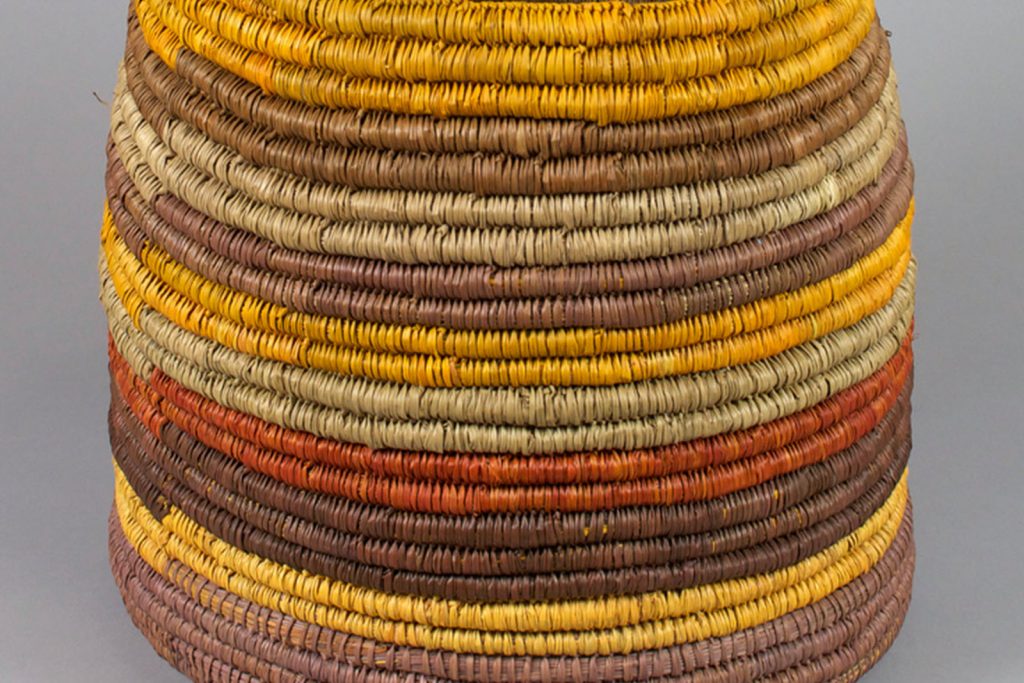The Buku-Larrŋgay Mulka Centre exhibits and sells a variety of artworks.
Ḻarrakitj
What are ḻarrakitj? Simply, they are memorial poles. In time past they held the bones of the dead and formed an important part of funeral rites. Today Yolŋu continue their cultural tradition without the human remains, selling their art and reviving the life and disseminating the beliefs of their ancestors. Painted (and sometimes carved) hollow stringy-bark branches, they depict the geological origins of different clans and within complex geometric and latterly more organic designs, they speak of their system of community.

Waŋupini 2017 by Nawurapu Wunuŋmurra. Earth pigments on Stringybark hollow log. Photo Tim Acker
 [Ḻarrakitj on display in one of Buku-Larrŋggay Mulka Centre’s four gallery spaces]
[Ḻarrakitj on display in one of Buku-Larrŋggay Mulka Centre’s four gallery spaces]
Ṉuwayak
After the wet season deluge, gaḏayka, the Stringybark tree, is stripped of its bark which is then cured by fire, weighted and left to dry. Ochres and earth pigments in red, yellow, black and white are obtained from well known deposits. A brush made of human hair is made. Then the age-old miny’tji, or sacred designs, belonging to each particular artist and their clan are produced using a meticulous layering of individual strokes to produce a cross hatched pattern readable by those with knowledge as belonging to a particular estate, clan, state of water, moiety and place. The elders have resisted a shift to painting the sacred title deeds of their country on canvas or board using acrylic, opting instead to continue the use of ṉuwayak (bark paintings), or sheets of bark.
 Nyapanyapa Yunupiŋu painting her ṉuwayak (bark painting)
Nyapanyapa Yunupiŋu painting her ṉuwayak (bark painting)
Yiḏaki (Didgeridoo)
What defines a yiḏaki? Didgeridoo is a non-Aboriginal term for an Aboriginal wind instrument that has numerous Aboriginal names. Prior to European colonisation, the instrument was limited to the Northern extremes of Australia, in particular Arnhem Land.
Amongst the Yolŋu clans of North East Arnhem Land, yiḏaki is the generic name for the naturally occurring termite hollowed trunks of young Eucalyptus trees that are cut and shaped into a musical instrument. This name is correctly used for instruments from this region that have been made and decorated solely by Yolŋu people. All other instruments should be called didgeridoos, unless they are made by an Aboriginal person and called by their local Aboriginal name for the instrument.
Contact Buku-Larrŋgay Mulka Centre to buy a yiḏaki, email or phone (08) 8987 1701 or outside Australia 618 8987 1701
- The tree is cut down.
- Decorated Yiḏaki
- Yiḏaki maker then sands the wood.
- The bark layer is removed.
- the Yiḏaki maker carefully selects a naturally occurring termite hollowed Stringybark tree.
Gunga Djäma (Weaves)
The age old practice of weaving bags, baskets and mats from the leaves of the pandanus and the bark of the kurrajong continues today. Making these things is very labour intensive. Gathering the materials can be quite exhausting. The spiky pandanus leaves are sometimes difficult to harvest, followed by the careful task of flaying the leaves before hanging them to dry. The dyes used are from the bulbs, roots or bark of various woodland plants. Once the material is collected, trimmed, dried and dyed the weaving begins. This is almost always done by women in groups. Men have been known to weave ceremonial or sacred objects but these are not for sale.
Contact Buku-Larrŋgay Mulka Centre to buy a gunga djäma, email or phone (08) 8987 1701 or outside Australia 618 8987 1701
 Gunga Djäma (Weaves)
Gunga Djäma (Weaves)
Dharpa (Wood sculptures)
Yolŋu artists create sculptures decorated with painted or incised designs. Pieces are available from small decorative objects made from soft woods to larger works in hardwood based on sacred ceremonial objects.
Contact Buku-Larrŋgay Mulka Centre to buy dharpa, email or phone (08) 8987 1701 or outside Australia 618 8987 1701




